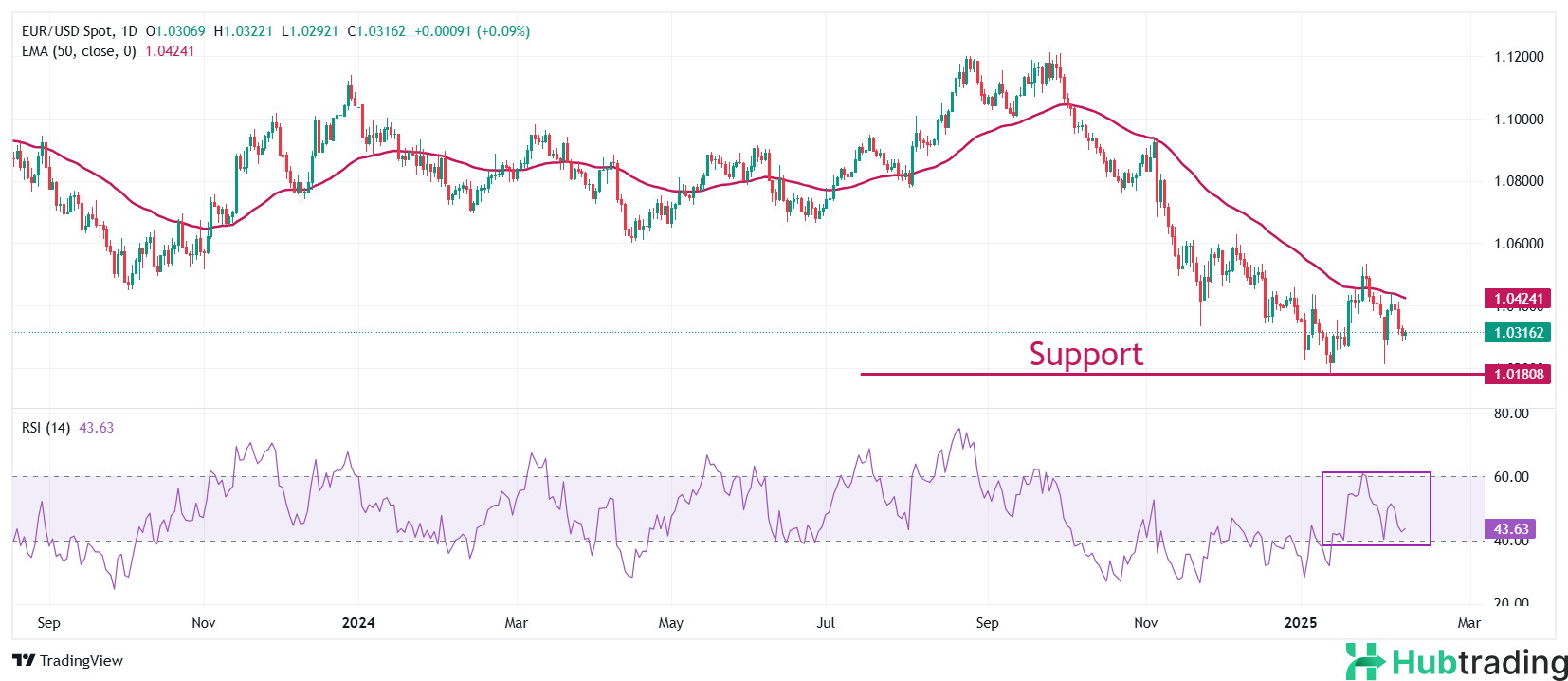- EUR/USD trades sideways near 1.0300 as investors await Fed Chair Jerome Powell’s testimony before Congress.
- US President Trump has implemented 25% tariffs on steel and aluminum imports from all nations.
- The Eurozone faces significant risks as a potential target of Trump’s reciprocal tariffs.
EUR/USD remains range-bound around 1.0300 in Tuesday’s European session as traders await Federal Reserve (Fed) Chair Jerome Powell’s testimony before Congress at 15:00 GMT. Investors are looking for insights into how long the Fed will maintain interest rates within the 4.25%-4.50% range and how new 25% tariffs on steel and aluminum imports could influence the monetary policy outlook.
In January, the Fed left interest rates unchanged, with Powell stating that the central bank will remain patient until it sees “real progress in inflation or some weakness in the labor market.” Meanwhile, on Monday, US President Donald Trump signed executive orders imposing a 25% tariff on steel and aluminum imports, effective March 12, and hinted at reciprocal tariffs on nations with what he deems unfair trade practices. The move aims to bolster domestic production but has sparked concerns over a potential global trade war and rising inflation in the US economy.
Investors will closely monitor the US Consumer Price Index (CPI) data for January, set for release on Wednesday at 13:30 GMT. Forecasts indicate core CPI may slow to 3.1% from December’s 3.2%, while headline inflation is expected to hold steady at 2.9%.
Market Movers: EUR/USD Edges Higher Amid Euro Strength
- EUR/USD ticks higher as the Euro (EUR) outperforms its peers, despite concerns that Trump’s tariffs could negatively impact the Eurozone. The region faces higher trade risks, particularly in the automotive sector, where it imposes a 10% levy on US imports while paying just 2.5% on its exports to the US. Lower sales could weigh on economic growth, making the outlook for the Euro more fragile.
- On the monetary policy front, traders anticipate three European Central Bank (ECB) rate cuts by summer, with markets fully pricing in a 75 basis-point reduction. Expectations are based on inflation gradually returning to the ECB’s 2% target.
- ECB policymaker and Bank of Portugal Governor Mario Centeno has suggested that rates may need to fall below the neutral level, as the Eurozone economy remains too weak to sustain inflation at 2%.
Technical Analysis: EUR/USD Holds Inside Monday’s Range

EUR/USD continues to consolidate within Monday’s trading range around 1.0300, with the 50-day Exponential Moving Average (EMA) near 1.0430 acting as a key resistance level. The 14-day Relative Strength Index (RSI) fluctuates between 40.00 and 60.00, reflecting a neutral market sentiment.
On the downside, support levels are seen at the January 13 low of 1.0177, followed by the psychological 1.0100 mark. Meanwhile, resistance stands at 1.0500, a key hurdle for Euro bulls.





